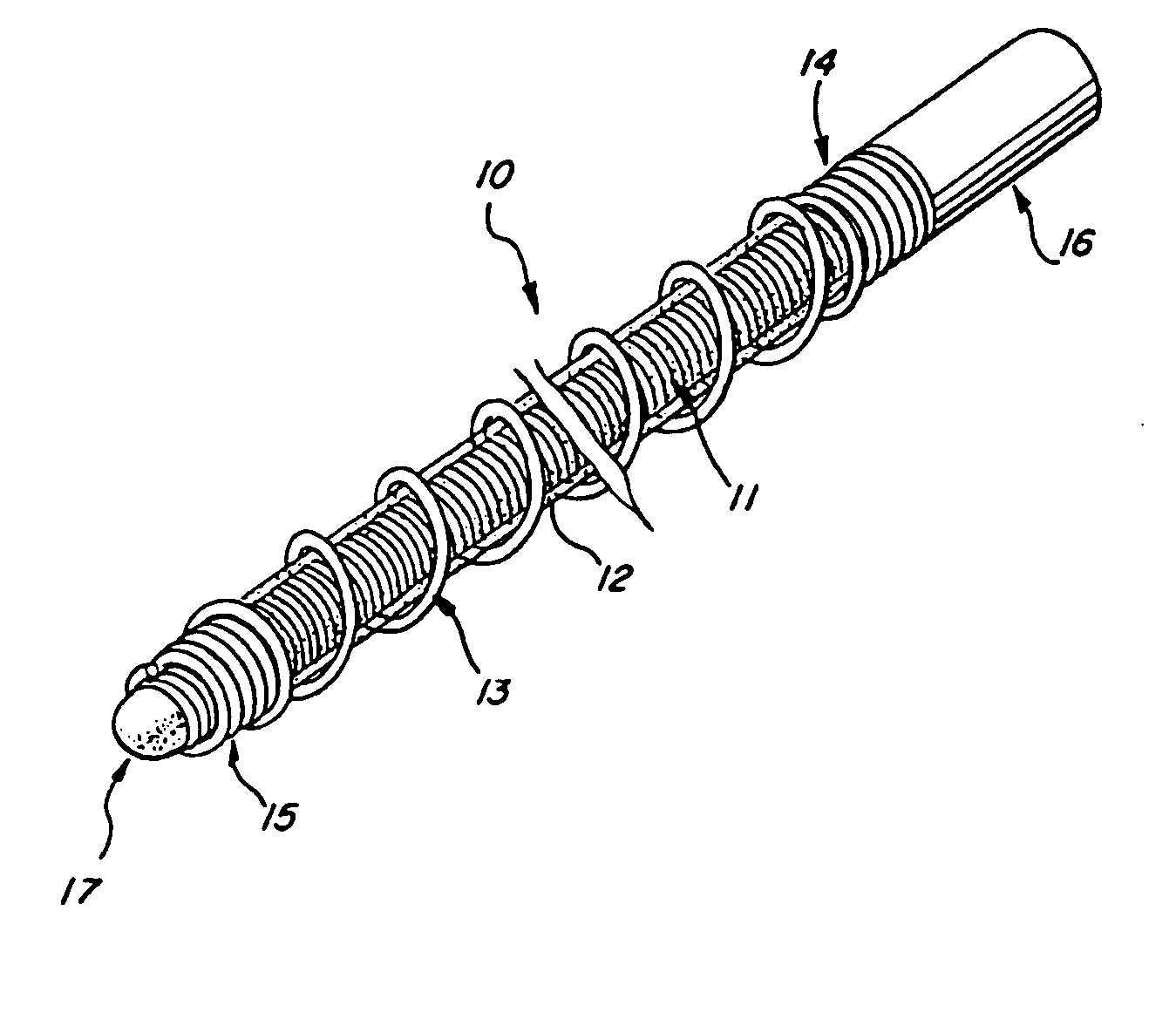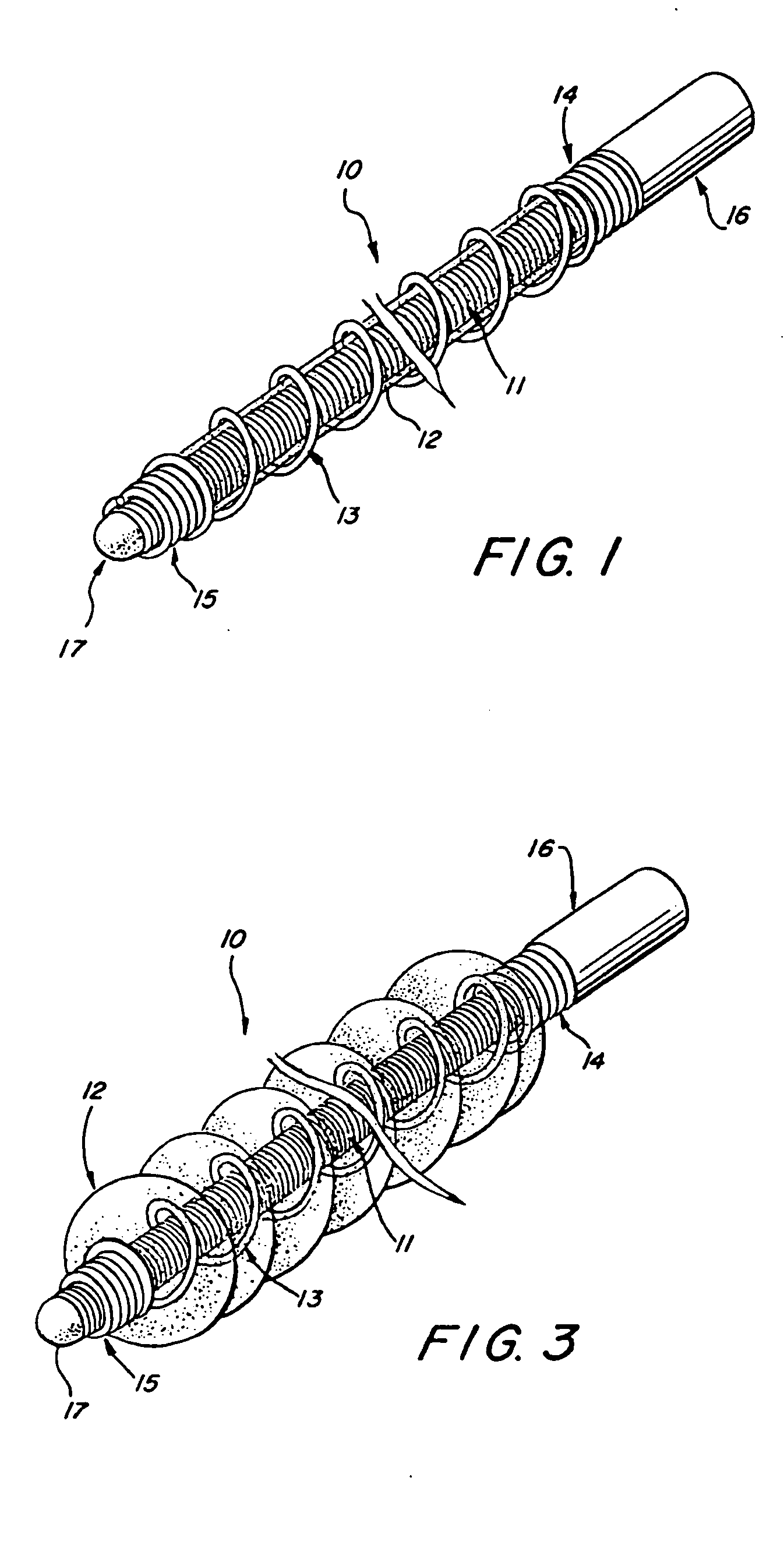Multi-layer coaxial vaso-occlusive device
a vaso-occlusive device and coaxial technology, applied in the field of vaso-occlusive devices, can solve the problems of decreasing and achieve the effects of reducing the contact area, reducing the aggregate friction, and reducing the resistance to device manipulation
- Summary
- Abstract
- Description
- Claims
- Application Information
AI Technical Summary
Benefits of technology
Problems solved by technology
Method used
Image
Examples
Embodiment Construction
[0025] Referring to FIGS. 1-4, a vaso-occlusive device 10, in accordance with a preferred embodiment of the invention, comprises three elongate, coaxial elements: an inner element 11, a non-metallic intermediate element 12, and a non-expansile outer element 13 that covers at least a portion of the intermediate element. The intermediate element 12 is in intimate contact with both the inner element 11 and the outer element 13.
[0026] The inner element 11 is formed of a flexible, elongate filament or wire that is preferably made of a material that allows visualization under various medical imaging means, such as X-ray, MRI, or ultrasound. Preferably, the inner element 11 is formed from a length of wire made of any of various biocompatible, radiopaque metals, such as platinum, tantalum, tungsten, gold, titanium, nitinol, stainless steel, Elgiloy (cobalt-chromium-nickel), or other suitable alloys known in the art. Alternatively, it can be made from or include non-metallic materials, such...
PUM
 Login to View More
Login to View More Abstract
Description
Claims
Application Information
 Login to View More
Login to View More - R&D
- Intellectual Property
- Life Sciences
- Materials
- Tech Scout
- Unparalleled Data Quality
- Higher Quality Content
- 60% Fewer Hallucinations
Browse by: Latest US Patents, China's latest patents, Technical Efficacy Thesaurus, Application Domain, Technology Topic, Popular Technical Reports.
© 2025 PatSnap. All rights reserved.Legal|Privacy policy|Modern Slavery Act Transparency Statement|Sitemap|About US| Contact US: help@patsnap.com



